Giving New Life to Old Tea Towels
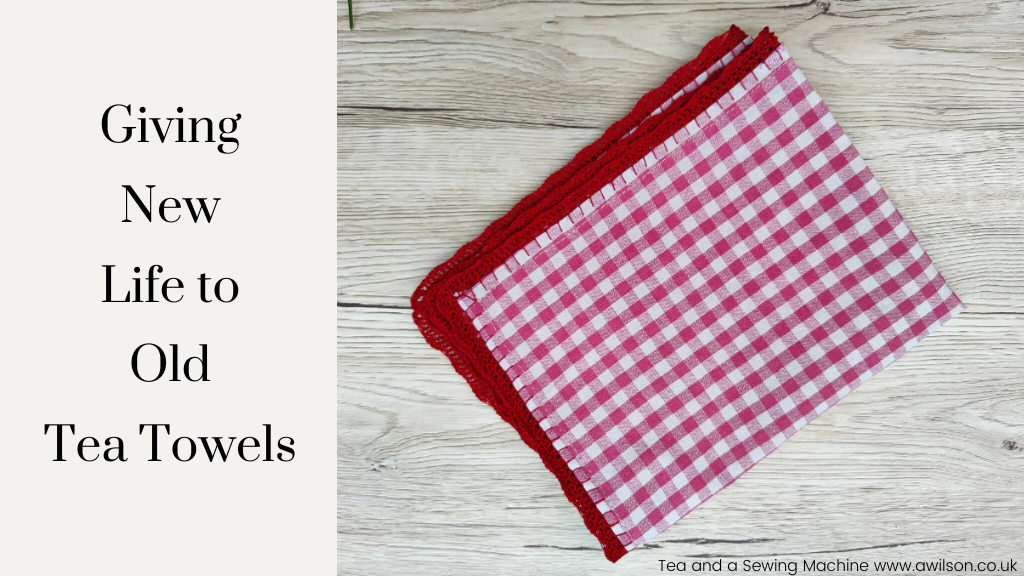
When we had our kitchen redone a few years ago, one of the first things I did was make some new tea towels.
Making new tea towels is an easy thing to do. You can just cut rectangles from pretty cotton fabric and hem them, then decorate them if you want to.
I still have those same tea towels, but they were looking tatty. The edges had frayed and there were holes at the edges as well.
Of course, I could have thrown them away and bought new ones. But the whole idea of throwing things out when there is still life in just because we can easily buy new ones seems wrong.
If you are a regular reader of Tea and a Sewing Machine, you might be thinking, “Hang on a sec. DIdn’t Anna write something a few months ago about throwing things away and getting rid of things that are rubbish? Aren’t holey tea towels rubbish?”
You would be right. I did write a post like that. It’s here. The point is that if I bought or made new tea towels, I would have too many and I would need to throw some away. So instead of bringing more stuff into my home, I’m going to see what I can do with what I already have.
I find it interesting that my granny’s generation, and the generations before her, had a different kind of attitude to the one we have now. They didn’t waste things. Clothes weren’t thrown away just because a button had come off. Buttons were sewn back on, shoes were reheeled, coats lasted decades, leftover food was used up. I can’t help but think that part of the current crisis is due at least a bit to things generally costing less than they did years ago. It’s almost not worth the effort of mending something, or using something up, when a replacement can be bought cheaply.
But even smallish amounts can add up quickly. That applies both to the money we spend and the things we throw away.
I suspect my granny wouldn’t even have considered throwing those tea towels away. She would have mended them and carried on using them. So I am doing the same.
I haven’t written this as a tutorial, because I don’t think it work that way. I’m hoping that it will work as inspiration if you have some tatty tea towels in need of repair.
The Tea Towels
The tea towels were very frayed and holey at the edges. When I unpicked the hems, there were places where it had been folded that had worn thin.
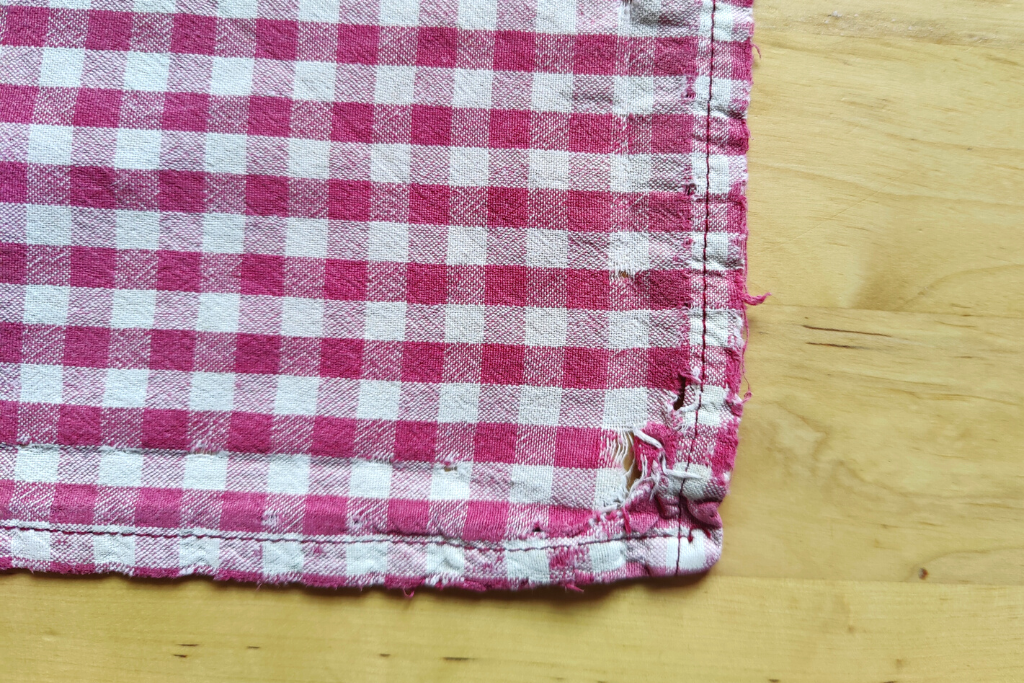
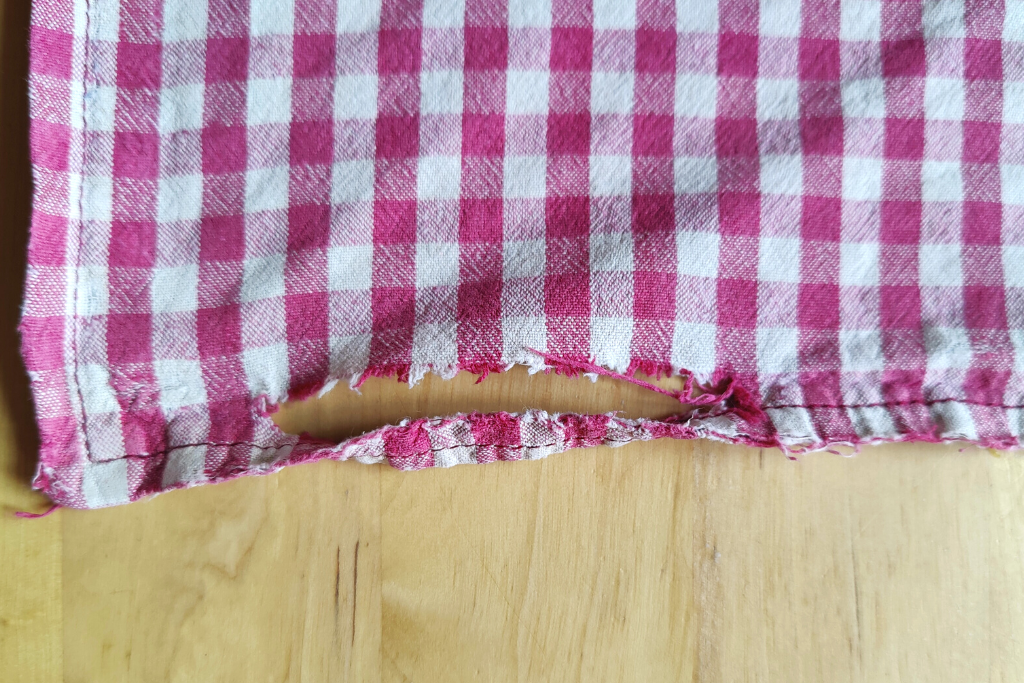
So the first thing to do was to deal with the tatty edges. If there had been holes in the middle, I would have embroidered flowers to cover them up, but the centre of the tea towels was hole free.
As mending the edges would result in the tea towels being a bit smaller, I decided to add a pretty crocheted border.
Repairing the Hems
Unpicking the hems and ironing the tea towels revealed that there was quite a lot of damage around the edges.
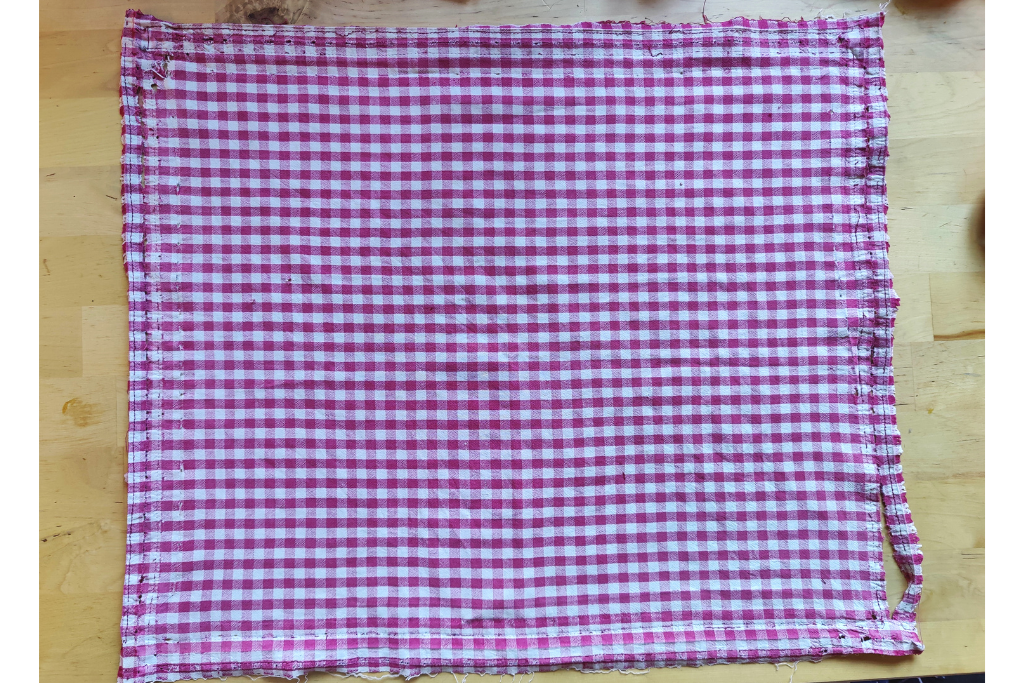
Folded hems are neater, and they have the added advantage of concealing rough edges as well as preventing further fraying to the raw edge. So I cut most of the tatty off, then resewed the hems.
Given that the bits I cut off were quite small and were already fraying, and that the fabric was 100 percent cotton, I didn’t even need to throw those bits in the bin. Instead, I put them into the compost bin in the garden where eventually they will break down and become part of the compost. The little bits of thread that were left in the fabric from the seams I had unpicked won’t break down because sewing thread is usually polyester. But the bits were tiny, so it’s unlikely to cause a problem in my compost.
Crocheted Edging
I used this embroidery thread (affiliate link). It was fine enough to sew into the tea towel, but chunky enough to crochet with. The weight of the thread was 10, and I used a 1.5mm crochet hook.
Usually with crochet, you’d do a row of chains first to have something to crochet into. Obviously I can’t crochet straight into a tea towel. So I sewed blanket stitch around the edge first.
Into the horizontal part of each blanket stitch, I crocheted trebles (double crochet if you are American!). Mostly I made 2 stitches into each blanket stitch, but where there was the odd stitch that was a bit bigger, I crocheted a third treble. My advice would be to keep an eye on it, and if it looks as though the stitches will be too spread out, then add in an extra one.
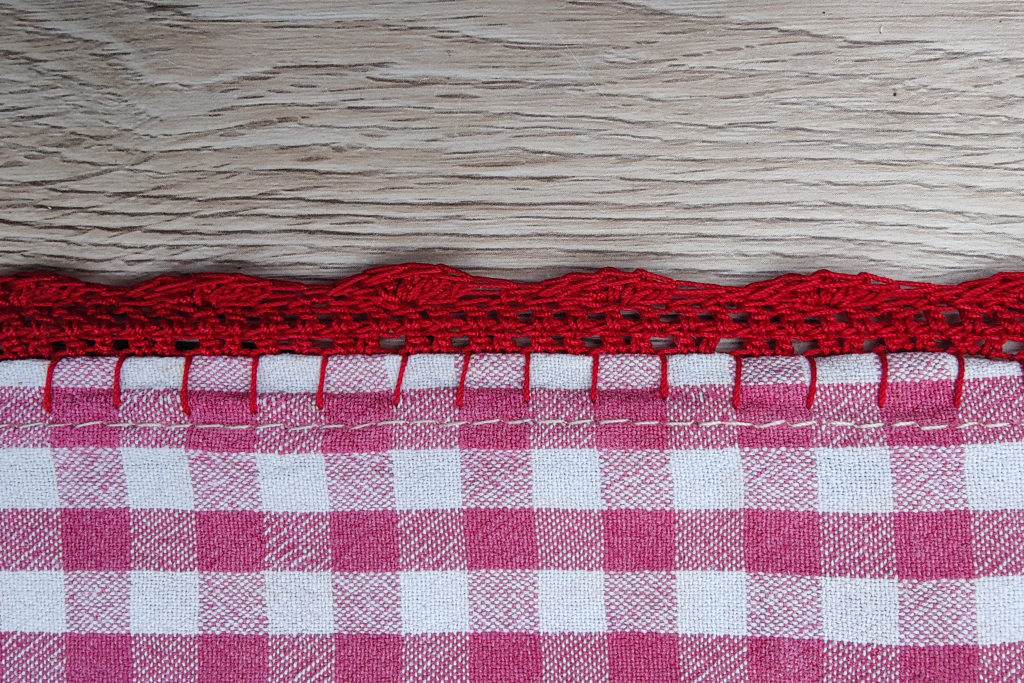
When I got to the corners, I crocheted 4 trebles into the last stitch of that edge, then 1 chain, then 4 trebles into the first stitch of the next edge.
Then I went round again, with an extra 2 trebles at the corner.
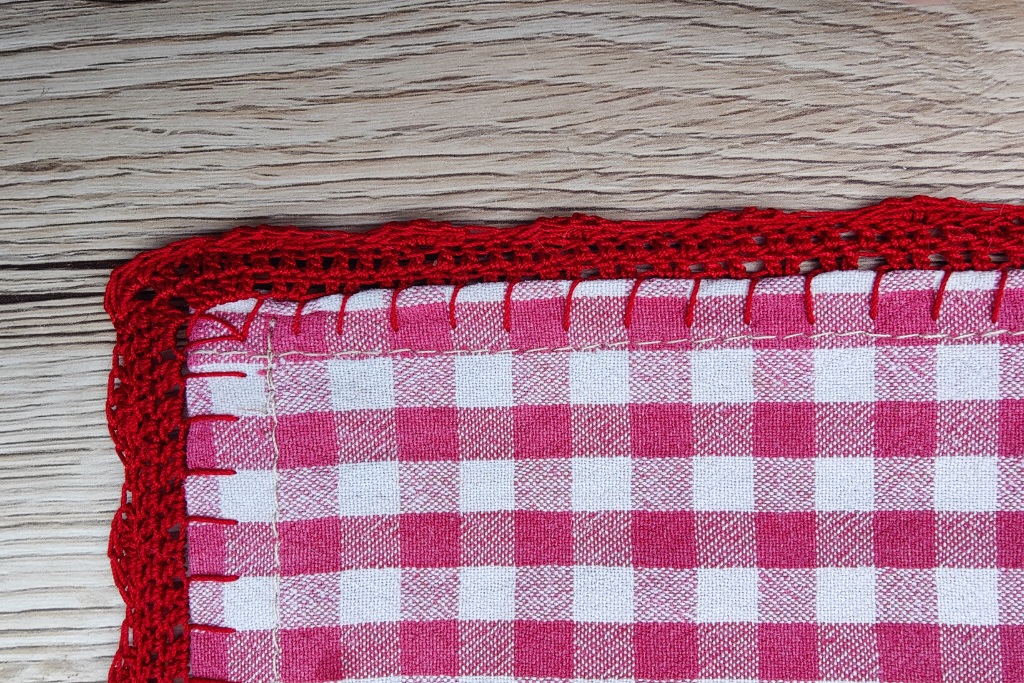
There are lots of lovely edgings, and it was hard to choose! In the end I opted for shell stitch. It’s quite easy to do, just a dc, then skip 2 stitches, 5 trebles into the 3rd stitch, skip 2 stitches again, then double crochet into the third. A couple of times I didn’t have the right number of stitches, so I either skipped 1 or 3 depending on whether there were too many or 2 few stitches.
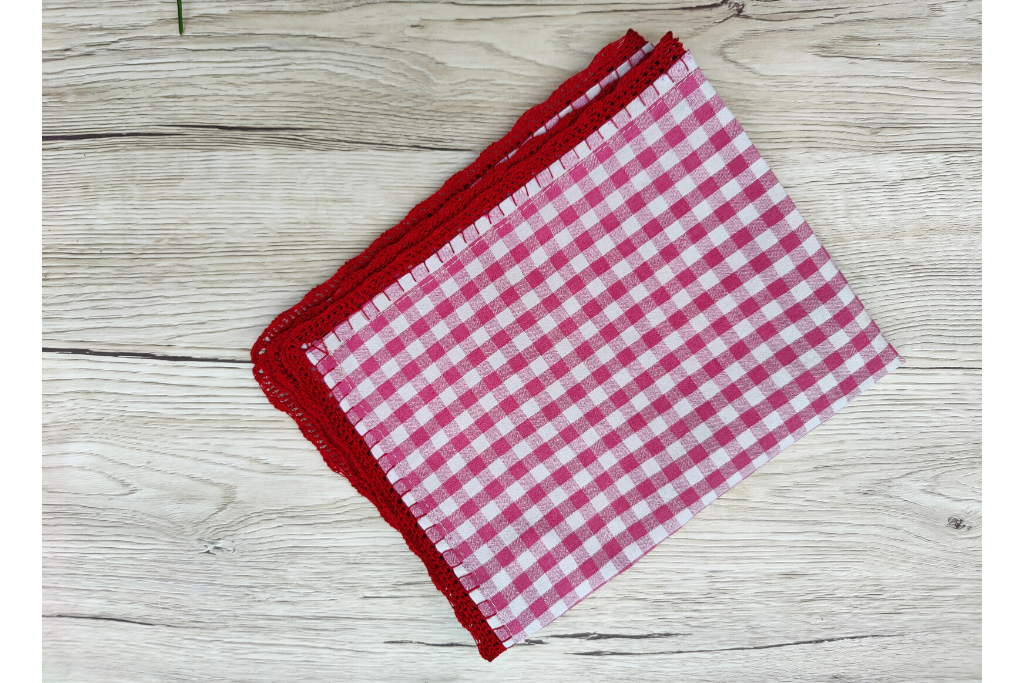
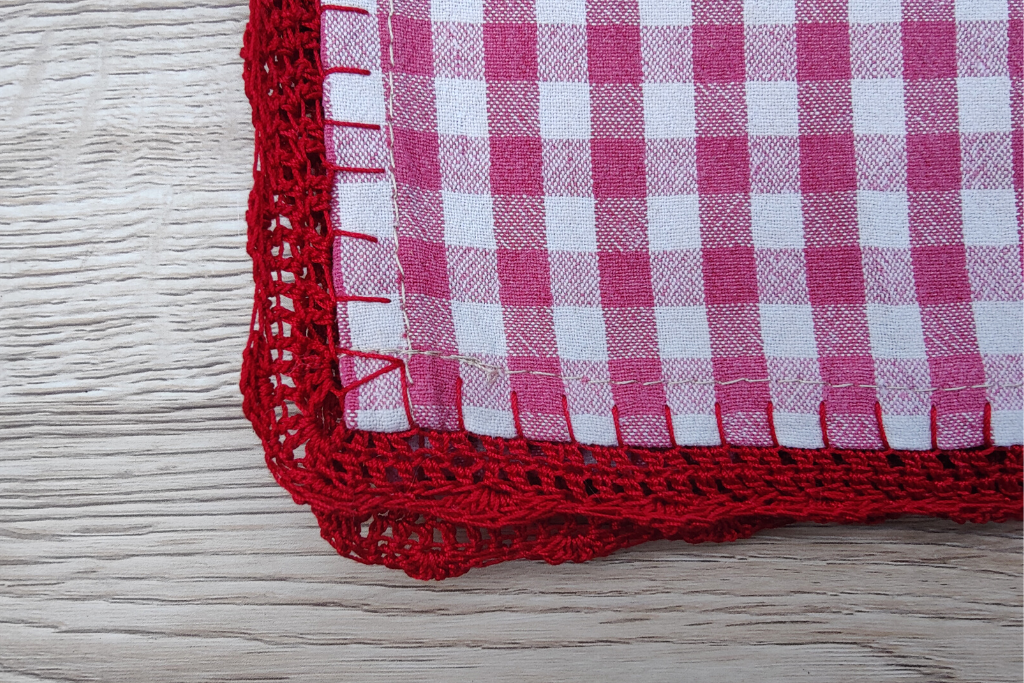
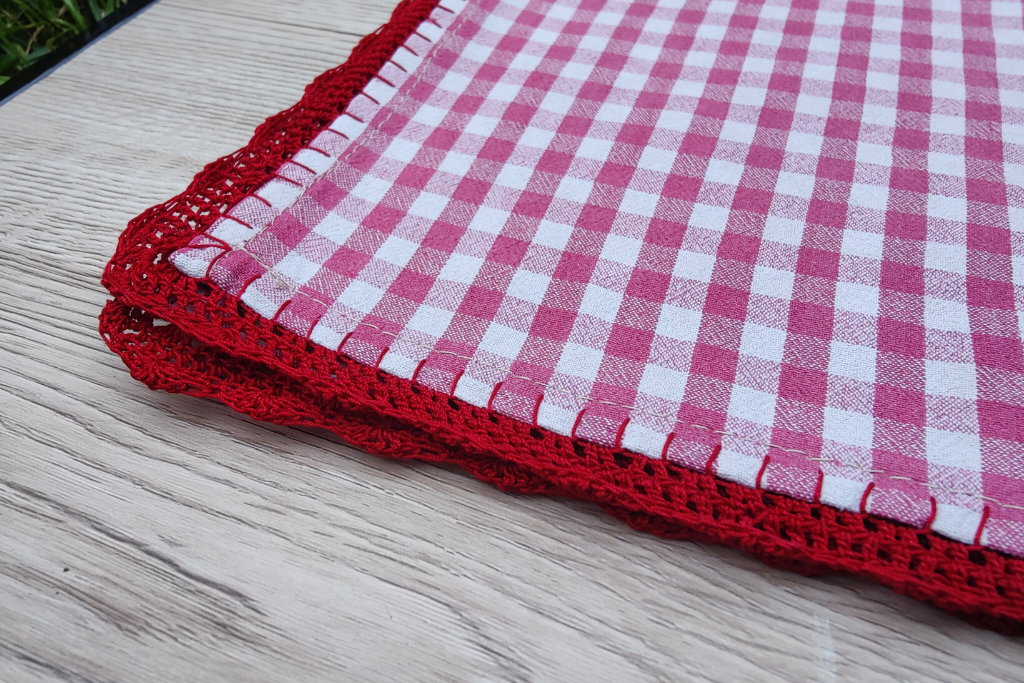
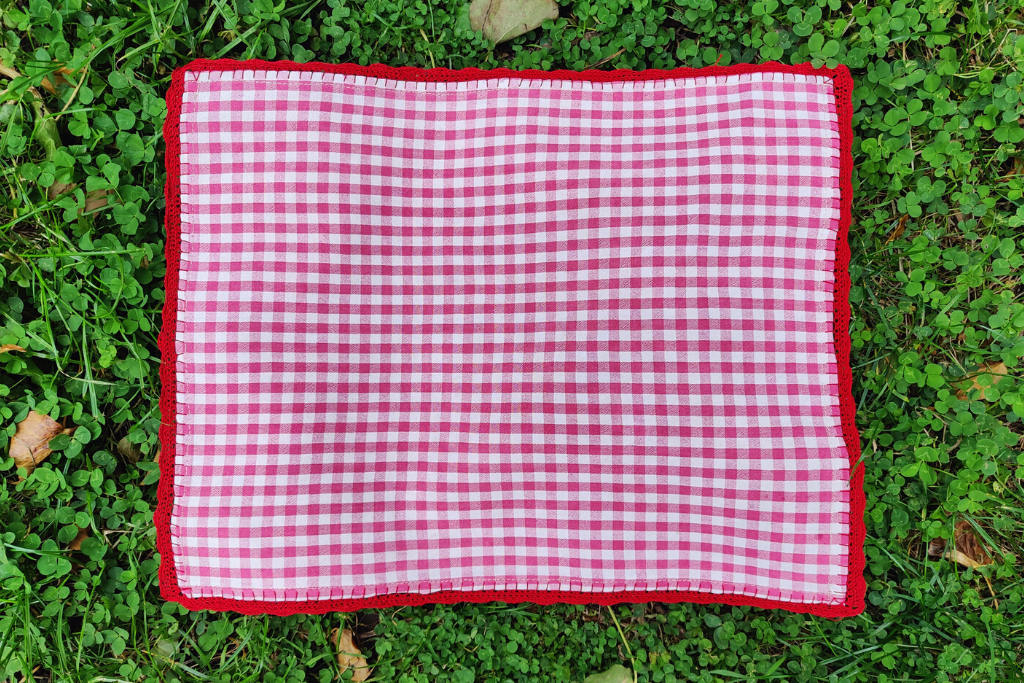
Other Ideas For Repairing Tatty Tea Towels
Small holes can be repaired using embroidery stitches. Depending in the size of the hole, it might be an idea to use some interfacing or some fabric on the wrong side.
Larger holes could be patched. Trying to make repairs look invisible can be very difficult. Consciously making them visible is easier! You could choose fabric that contrasts and try obvious stitching, like boro or shashiko.
One option I considered for the tatty near the edges was to sew ricrac or some other trim over the tatty. As well as hiding it, sewing the trim to it would prevent it from getting any worse. It might be tempting to use ribbon, but it’s worth considering how well the ribbon might endure repeated washing. A cotton trim would probably be better than satin ribbon.
If after trimming off the tatty edges, you feel that the tea towels are too small, you could join 2 (or more!) together to make a larger one.
And If They Are Beyond Repairing…
Cut them into smaller pieces and use them as cloths for cleaning windows.
Cut them into squares and sew a piece of old towel or an old flannel to the wrong side. Now your old tea towel has become washing up cloths!
Make them into pattern weights.
Use them to add pockets to a favourite apron.
Plait several together, knot the ends and give it to your favourite dog to play with!
If you are a cat person instead, make them into catnip toys.
Make them into rice bags for heating, or covers for freezer packs for bumps and bruises.

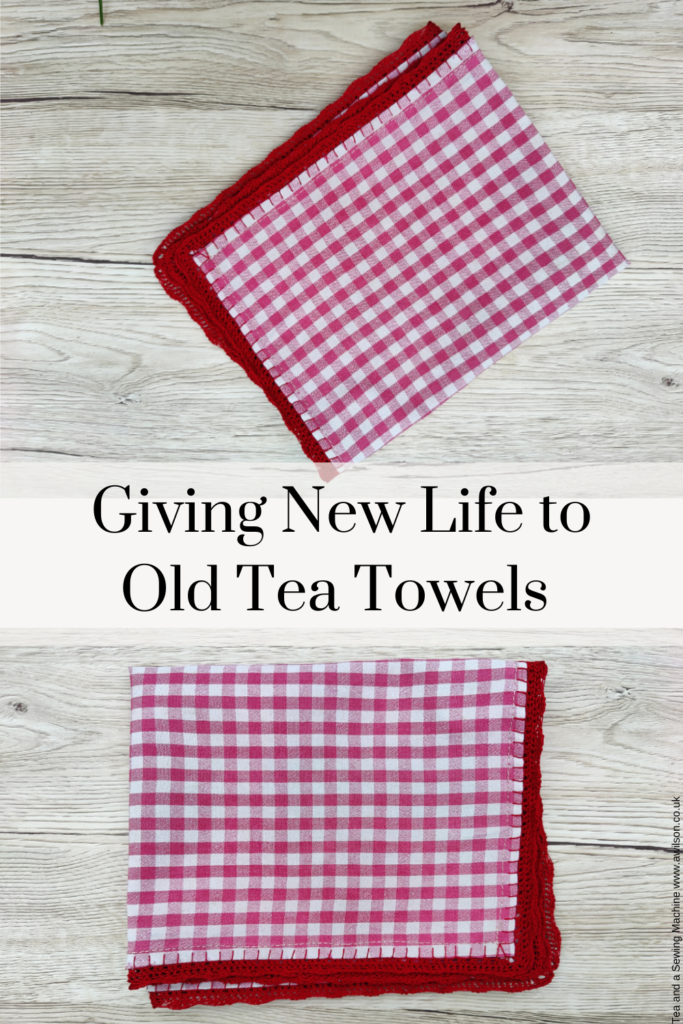
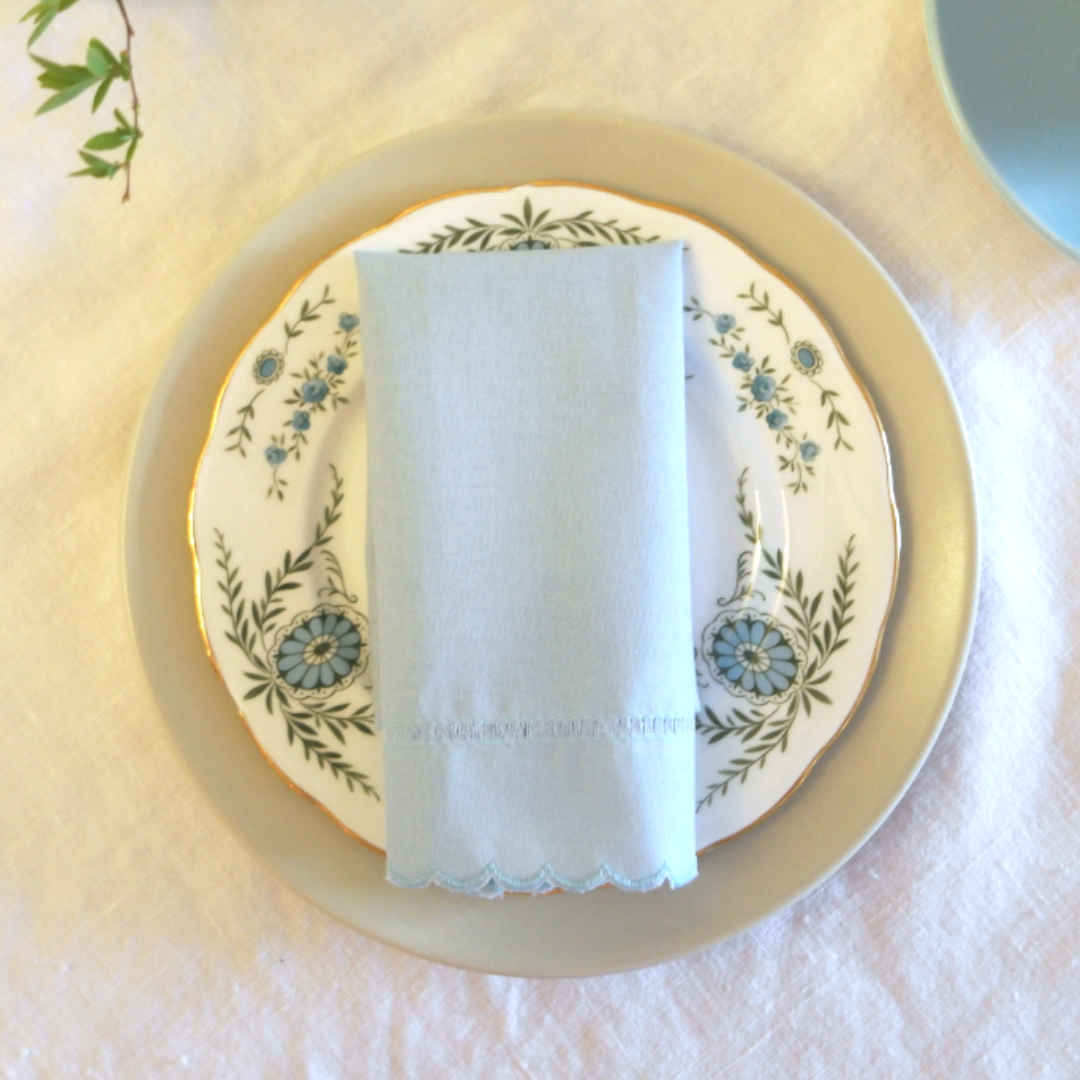
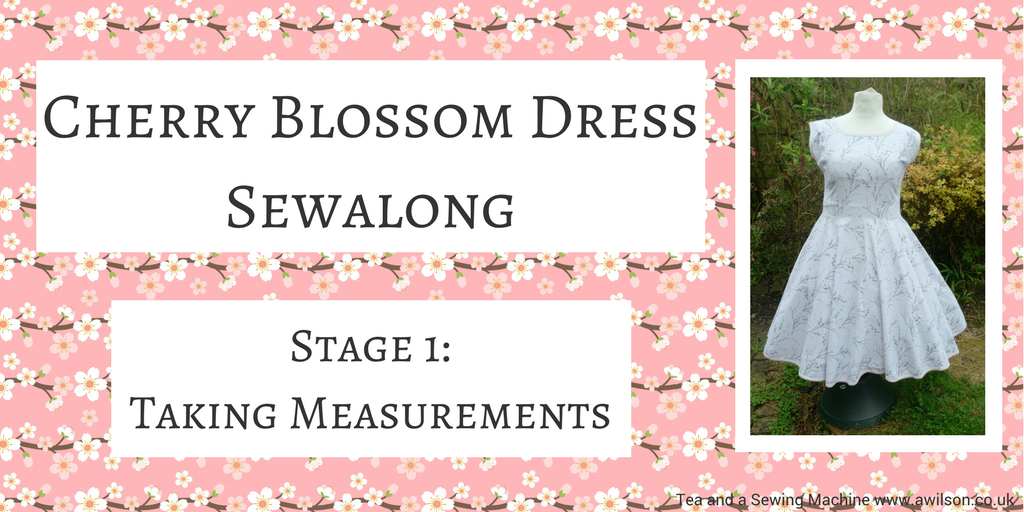
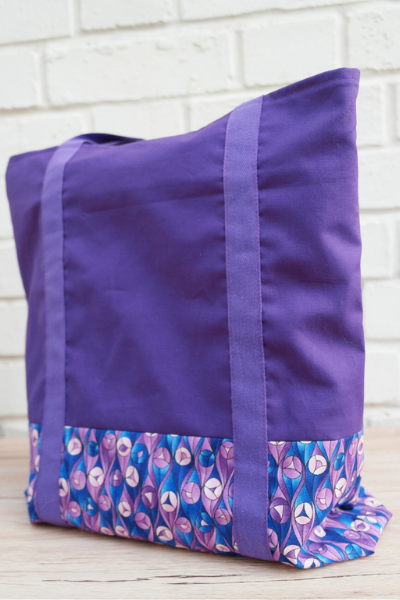


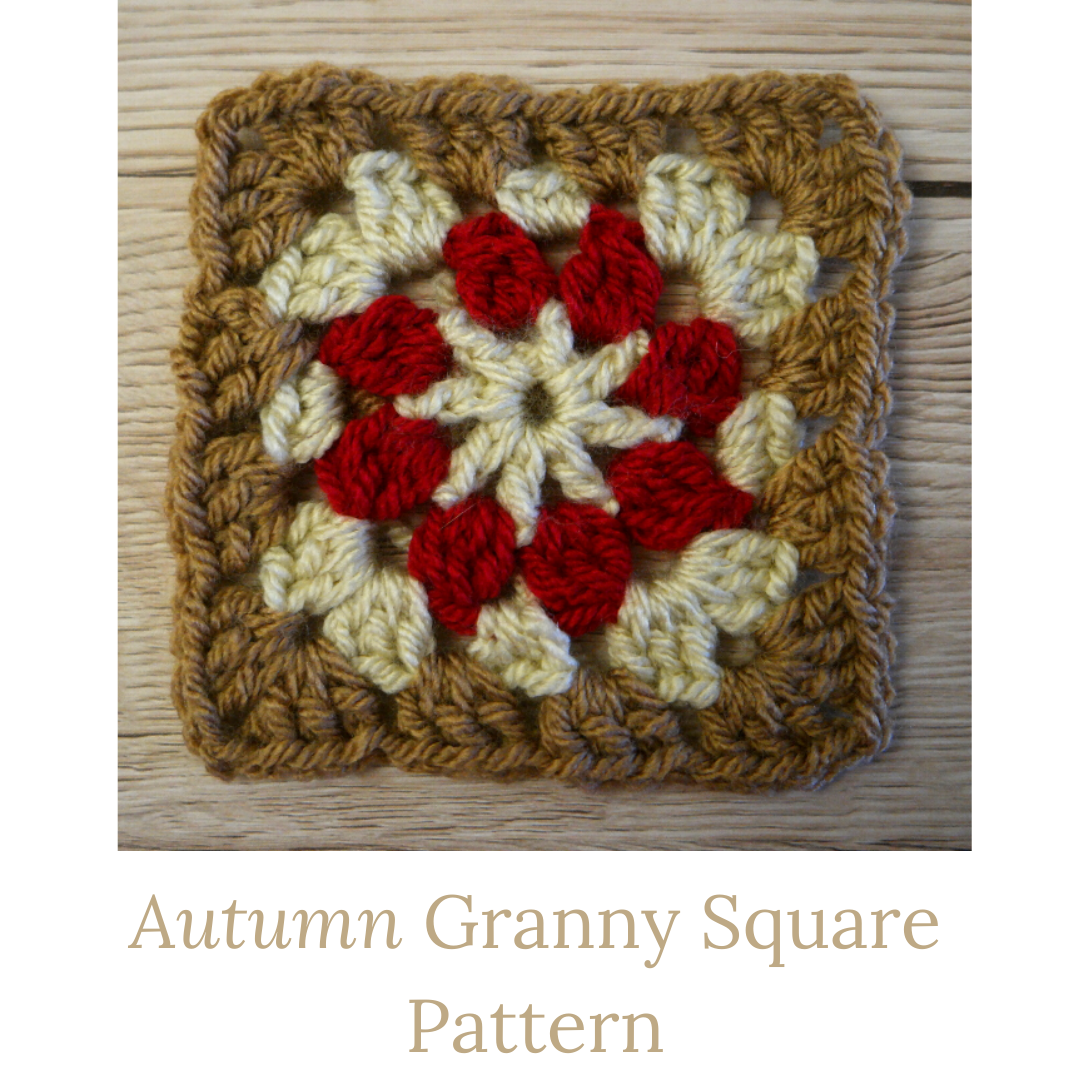
Thanks for the guide on making Tea Towels
Anna, your article is a true testament to the beauty of resourcefulness! Your approach to restoring tea towels instead of tossing them away resonates deeply. I too have used old tea towels for window cleaning – their absorbency and texture make them great for achieving a good shine without leaving lint behind. Thanks for sharing!
The old saying, “use it up, wear it out, make it do or do without” has been on my mind a lot lately and I try to live to that. Had a “no buy’ year last year and that really solidified exactly what you were doing with your dish towels. Nice post.
Thank you!
Hi Anna
Great article and definitely one that gives food for thought. I do have a kitchen hand towel that has a hole in an awkward place and I will probably cut it up to use as cleaning cloths. Before I read this article I would have thrown it away. Can’t believe I thought that. So thank you.
My Grandma used to knit her own dishcloths. I thought about her doing this (with a smile on my face because as an 8 year old child I thought this was weird) and it prompted me to see if ‘dishcloth yarn’ exists. It does, and I am in the process of buying various colours of cotton yarn to knit my own. I told my brother about this project idea and he wants me to knit him some too.
Thank you again for the article. It came along at the right time.
With kind regards.
Cee Jay.
I’m pleased it brought to mind happy memories of your grandma xx